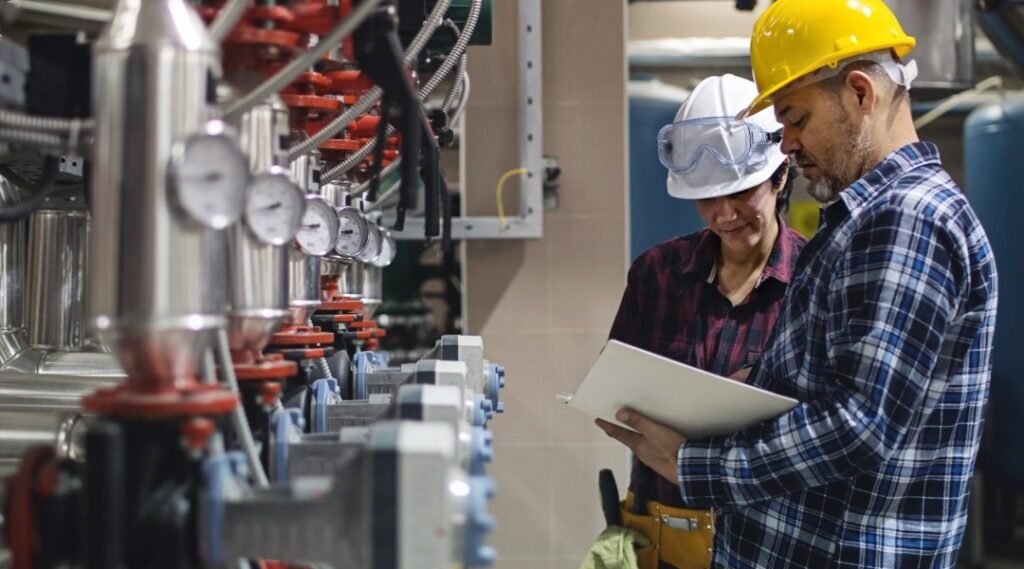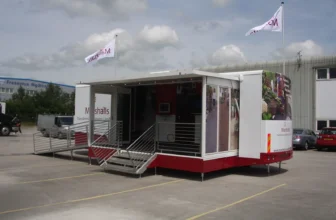
Effective equipment maintenance not only protects valuable machinery but also plays a crucial role in reducing long-term insurance expenses. Heavy machinery and industrial equipment represent substantial capital investments for contractors and businesses across construction, mining, manufacturing, and transport sectors.
Protecting these assets through comprehensive plant and machinery insurance forms an essential component of risk management strategies. However, insurance premiums for plant equipment can constitute significant operational expenses. Strategic equipment maintenance practices not only extend machinery lifespan and prevent costly breakdowns but also directly influence insurance costs.
Understanding the connection between maintenance protocols and premium rates enables businesses to implement practices that deliver dual benefits of improved equipment performance and reduced insurance expenditure.
Table of Contents
The Direct Connection Between Maintenance and Insurance Costs

Source: leistertech.com
Insurers calculate premiums based fundamentally on risk assessment. Well-maintained equipment presents lower risk profiles, translating directly into reduced insurance costs.
When machinery receives regular servicing, undergoes systematic inspections, and maintains documented maintenance histories, insurers view these assets as less likely to experience failures, breakdowns, or accidents that could trigger claims.
Equipment in poor condition elevates multiple risk dimensions. Mechanical failures increase accident probability, potentially causing injury to operators or damage to surrounding property.
Neglected maintenance creates higher likelihood of complete equipment failure requiring expensive repairs or replacement.
These elevated risks compel insurers to charge higher premiums to offset potential claim costs they anticipate from poorly maintained machinery.
Insurance underwriters specifically examine maintenance records during policy assessments. Comprehensive documentation demonstrating systematic care signals responsible ownership and reduces perceived risk.
Conversely, absence of maintenance records or evidence of deferred maintenance raises red flags, resulting in premium loadings or coverage restrictions. This direct relationship between maintenance quality and insurance costs provides compelling financial incentive beyond operational benefits.
Establishing Systematic Maintenance Schedules
Creating and adhering to rigorous maintenance schedules represents the foundation of equipment care that insurers reward. Manufacturers provide recommended service intervals based on operating hours, calendar periods, or usage intensity.
Following these guidelines ensures machinery operates within designed parameters, preventing premature wear and reducing failure probability.
Scheduled maintenance should encompass multiple equipment systems. Engine servicing includes oil changes, filter replacements, and fluid level checks at specified intervals.
Hydraulic systems require regular inspection for leaks, fluid condition assessment, and component wear evaluation.
Electrical systems need periodic testing, connection verification, and wiring condition checks. Structural components benefit from systematic inspection for cracks, corrosion, or damage that could compromise integrity.
Documentation of all maintenance activities proves critical for insurance purposes. Detailed service records should capture dates, work performed, parts replaced, technician identification, and any issues discovered during inspections. Digital maintenance management systems simplify record-keeping whilst providing readily accessible histories for insurance reviews.
These comprehensive records demonstrate commitment to equipment care that insurers recognise through premium reductions.
Operator Training and Competency

Source: praxis42.com
Equipment damage frequently stems from improper operation rather than mechanical failure. Investing in comprehensive operator training reduces accident probability whilst demonstrating risk management commitment that resonates with insurance underwriters.
Properly trained operators understand machinery capabilities, recognise warning signs of developing problems, and follow protocols that prevent damage from misuse.
Training programmes should address multiple competency dimensions. Technical operation training ensures operators understand control functions, safety systems, and proper operating procedures.
Maintenance awareness training helps operators conduct pre-operation inspections, identify potential issues, and perform basic servicing tasks.
Safety training emphasises hazard recognition, emergency procedures, and risk mitigation practices.
Certification documentation provides tangible evidence of operator competency. Industry-recognised training credentials and internal competency assessments create records that insurers value.
Regular refresher training maintains skills and updates operators on equipment modifications or procedure changes.
This ongoing investment in operator development signals organisational commitment to safe, competent equipment operation that translates into lower insurance premiums.
Preventive Maintenance Versus Reactive Repairs
Shifting from reactive repair approaches to preventive maintenance philosophies fundamentally alters risk profiles that drive insurance costs. Reactive maintenance—addressing problems only after equipment fails—creates unpredictable breakdown patterns, extended downtime, and higher repair costs.
This approach maximises claim frequency and severity, directly increasing insurance premiums.
Preventive maintenance anticipates potential failures before they occur. Regular inspections identify wearing components requiring replacement before catastrophic failure.
Scheduled servicing addresses minor issues before they escalate into major problems. Predictive technologies like vibration analysis, thermal imaging, and oil analysis detect developing problems in early stages when intervention remains relatively inexpensive.
The financial benefits of preventive maintenance extend beyond insurance savings. Equipment availability improves through reduced unplanned downtime.
Repair costs decrease by addressing issues before they cause secondary damage. Equipment lifespan extends through proper care, delaying capital replacement requirements. Insurers recognise these benefits through premium reductions reflecting lower claim probability from well-maintained assets.
Equipment Storage and Security Measures
How and where equipment is stored during non-operational periods significantly impacts insurance costs.
Secure storage reduces theft risk whilst protecting machinery from weather exposure and vandalism. Insurers adjust premiums based on storage arrangements, rewarding businesses implementing comprehensive security protocols.
Enclosed storage facilities provide optimal protection. Equipment housed in locked buildings gains protection from theft, weather damage, and unauthorised use.
For machinery requiring outdoor storage, secure compounds with perimeter fencing, controlled access, and lighting create protective environments that reduce risk exposure.
Technology-enhanced security measures further reduce theft risk.
GPS tracking systems enable equipment location monitoring and rapid recovery if stolen. Immobilisation devices prevent unauthorised operation. Security cameras provide surveillance deterring theft attempts whilst documenting any security incidents. Alarm systems alert authorities to unauthorised access attempts.
These security investments demonstrate risk mitigation commitment that insurers reward through reduced theft coverage premiums.
Maintaining Comprehensive Equipment Records

Source: andersonintl.com
Detailed record-keeping extends beyond maintenance documentation to encompass all equipment-related information. Complete records enable accurate insurance valuations, support claims processing, and demonstrate responsible asset management that influences premium calculations.
Equipment inventories should capture detailed specifications including make, model, serial numbers, purchase dates, and original costs. Modification records document any alterations or upgrades affecting equipment value or capabilities. Usage logs track operating hours, project deployments, and operational conditions. Incident reports detail any accidents, damage, or near-misses involving equipment.
Photographic documentation proves invaluable for insurance purposes. Regular photography captures equipment condition, identifies pre-existing damage, and provides baseline references for damage assessments. Video recordings can document operational capabilities and condition during equipment surveys.
This visual evidence supports insurance valuations and expedites claims processing when incidents occur.
Age and Condition Considerations
Equipment age significantly influences both insurability and premium rates. Newer machinery typically attracts lower premiums due to reduced breakdown risk and higher reliability. However, well-maintained older equipment can command competitive insurance rates when condition documentation demonstrates continued serviceability.
For newer equipment, maintaining manufacturer warranty compliance proves essential. Warranty requirements typically mandate specific maintenance protocols and authorised service providers. Adhering to these requirements preserves warranty coverage whilst creating documentation that insurers value. Newer equipment often benefits from replacement cost coverage rather than depreciated actual cash value, providing superior protection against total loss.
Older equipment faces different insurance considerations. Insurers may require detailed condition assessments or engineering inspections before providing coverage.
Demonstrating exemplary maintenance becomes crucial for securing affordable premiums on aged machinery. Some insurers offer agreed value coverage for older equipment, establishing fixed payout amounts based on documented condition rather than market depreciation.
Risk Assessment and Hazard Mitigation
Conducting systematic risk assessments identifies equipment-related hazards that could trigger insurance claims.
Addressing identified risks demonstrates proactive risk management that insurers recognise through premium adjustments.
Regular reassessment ensures ongoing identification of emerging hazards as operational conditions change.
Risk assessments should evaluate multiple hazard categories. Physical hazards include pinch points, crushing zones, and rotating components requiring safeguarding. Environmental hazards encompass noise, vibration, and emissions requiring mitigation.
Operational hazards involve load limitations, stability concerns, and operational envelope restrictions. Each identified hazard requires control measures reducing injury or damage probability.
Implementing identified risk controls creates safer operating environments whilst reducing claim likelihood. Engineering controls modify equipment or work environments eliminating hazards at source. Administrative controls establish procedures and protocols managing risk exposure.
Personal protective equipment provides final defence when other controls prove insufficient. Documentation of risk assessments and implemented controls provides evidence supporting premium negotiations.
Engaging Professional Service Providers

Source: mengsolutions.com.au
Whilst in-house maintenance capabilities suit some organisations, engaging professional service providers offers advantages that insurance companies recognise. Specialist service providers bring technical expertise, calibrated diagnostic equipment, and manufacturer training ensuring high-quality maintenance work.
Authorised service centres often provide warranties on work performed, adding protection layer beyond standard coverage. Their documentation meets stringent standards that insurers readily accept. Service provider certifications and industry accreditations demonstrate competency that reduces perceived maintenance quality risk.
Long-term service agreements with professional providers create predictable maintenance schedules and guaranteed response times for breakdowns.
These arrangements demonstrate commitment to equipment care whilst providing insurers confidence in ongoing maintenance quality. Some insurers offer premium discounts specifically for equipment maintained through authorised service networks, recognising the reduced claim risk professional maintenance delivers.
Environmental and Operational Condition Management
Operating environments significantly influence equipment deterioration rates and maintenance requirements. Harsh conditions accelerate wear, increase breakdown probability, and elevate insurance risk perceptions.
Managing environmental exposures and operating conditions reduces maintenance intensity whilst demonstrating risk awareness that influences premium calculations.
Dust and contamination control measures protect sensitive equipment components. Regular cleaning prevents abrasive particle accumulation damaging seals, bearings, and moving parts.
Air filtration systems reduce contaminant ingress into engines and hydraulic systems. Enclosures protect equipment from environmental exposure during storage and operation.
Operating condition monitoring identifies situations exceeding equipment design parameters.
Load monitoring ensures machinery operates within rated capacities. Temperature monitoring detects cooling system issues before overheating causes damage. Pressure monitoring identifies hydraulic or pneumatic system problems early. These monitoring practices prevent damage from excessive operating stresses whilst creating documentation insurers value.
Communicating Maintenance Practices to Insurers
Insurers can only recognise exemplary maintenance practices when they know about them. Proactively communicating maintenance protocols, documentation systems, and risk management initiatives positions businesses favourably during premium negotiations.
Many policyholders overlook this communication, missing opportunities for premium reductions their practices warrant.
During policy renewals or new coverage applications, providing detailed maintenance documentation demonstrates asset care quality. Maintenance management system reports, service provider certifications, and operator training records substantiate claims of comprehensive equipment care.
Photographic evidence showing equipment condition provides visual confirmation supporting maintenance documentation.
Some insurers conduct equipment inspections or surveys before providing coverage. Preparing for these assessments by ensuring equipment cleanliness, addressing visible defects, and organising documentation facilitates positive evaluations. Demonstrating maintenance capabilities during insurer visits creates lasting impressions influencing not just immediate premium calculations but also long-term insurance relationships.
Long-Term Insurance Cost Management

Source: fabrico.io
Viewing equipment maintenance as insurance cost management strategy rather than merely operational necessity creates powerful financial incentives for comprehensive care programmes. The cumulative premium savings from consistently well-maintained equipment over machinery lifespans often exceed maintenance programme costs, delivering positive return on investment beyond operational benefits.
Establishing baseline premium costs enables tracking of maintenance impact on insurance expenses. Monitoring premium trends following maintenance programme implementations quantifies financial benefits. This data supports business cases for maintenance investments whilst identifying practices delivering optimal insurance cost reductions.
Trade insurance specialists can provide guidance regarding maintenance practices insurers particularly value. Their industry knowledge identifies specific documentation, certifications, or protocols that trigger premium discounts. Building relationships with insurance advisers familiar with plant and machinery insurance nuances ensures businesses maximise available premium reductions through strategic maintenance approaches.
Frequently Asked Questions
How quickly do maintenance improvements affect insurance premiums?
Insurance premium adjustments typically occur during policy renewal periods rather than mid-term. Implementing enhanced maintenance practices today positions businesses for premium reductions at next renewal, which might be several months away. However, some insurers conduct mid-term reassessments for significant risk improvements, potentially triggering earlier premium adjustments.
Documenting maintenance improvements throughout policy periods provides evidence supporting renewal negotiations.
The key lies in maintaining comprehensive records demonstrating sustained commitment rather than temporary compliance. Insurers value consistent long-term practices over short-term improvements implemented immediately before renewals, so establishing robust maintenance protocols early delivers maximum premium benefits.
Do all insurance companies offer maintenance-related premium discounts?
Whilst most insurers incorporate maintenance quality into risk assessments affecting premiums, the extent of recognition varies between providers. Some insurers offer specific percentage discounts for documented maintenance programmes, whilst others incorporate maintenance considerations into broader risk scoring methodologies without explicit discount schedules.
Specialist plant and machinery insurers generally place greater emphasis on maintenance quality compared to general insurers lacking equipment expertise. Shopping between insurers often reveals substantial premium variations based on how different underwriters assess maintenance practices.
Working with insurance specialists familiar with equipment insurance nuances helps identify insurers most likely to reward comprehensive maintenance programmes through competitive premiums.
What maintenance documentation do insurers require?
Documentation requirements vary between insurers, but comprehensive records consistently support favourable premium assessments.
Essential documentation includes service records detailing work performed, dates, and technician identifications. Inspection reports documenting equipment condition and identified issues prove valuable.
Operator training records and certification documentation demonstrate competency. Equipment modification records and specification sheets support accurate valuations.
Photographic evidence showing equipment condition provides visual confirmation. Maintenance schedule documentation proves systematic approaches rather than reactive responses.
Digital maintenance management systems consolidate this information efficiently.
When uncertain about specific insurer requirements, requesting documentation checklists during policy applications ensures provision of relevant information supporting optimal premium calculations.
Can maintenance reduce premiums for older equipment?
Well-maintained older equipment can command competitive insurance premiums despite age when documentation demonstrates continued serviceability.
Whilst new equipment naturally attracts lower base premiums, exemplary maintenance records bridge premium gaps between new and aged machinery.
Insurers primarily concern themselves with breakdown probability and condition rather than chronological age alone.
Regular inspections, component replacements, and system upgrades maintaining older equipment to high standards demonstrate reliability justifying reasonable premiums.
Some insurers specialise in older equipment, recognising that well-maintained machinery often outperforms poorly maintained newer assets.
Engineering inspections or condition surveys may be required for aged equipment, but positive assessments supported by maintenance documentation facilitate affordable coverage for older machinery fleets.
Does equipment manufacturer matter for insurance costs?
Equipment manufacturer and model influence insurance premiums through multiple factors.
Reputable manufacturers with proven reliability records generally command lower premiums due to reduced breakdown expectations.
Availability of replacement parts affects repair costs and downtime, influencing risk assessments.
Some equipment types have higher theft rates, elevating comprehensive coverage costs regardless of maintenance quality.
Manufacturers providing comprehensive service networks and training resources facilitate proper maintenance, which insurers recognise.
Specialty or uncommon equipment may attract premium loadings due to limited repair expertise or parts availability.
When purchasing new equipment, considering insurance cost implications alongside acquisition costs provides complete ownership expense perspective.
Insurers familiar with specific equipment types often offer more competitive premiums than general providers lacking equipment expertise.







